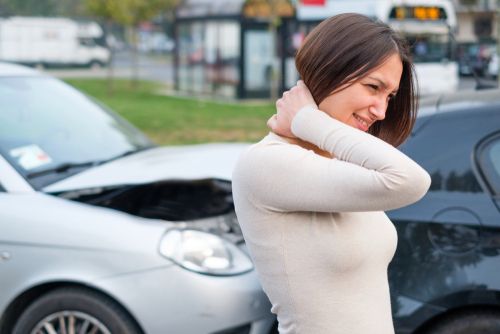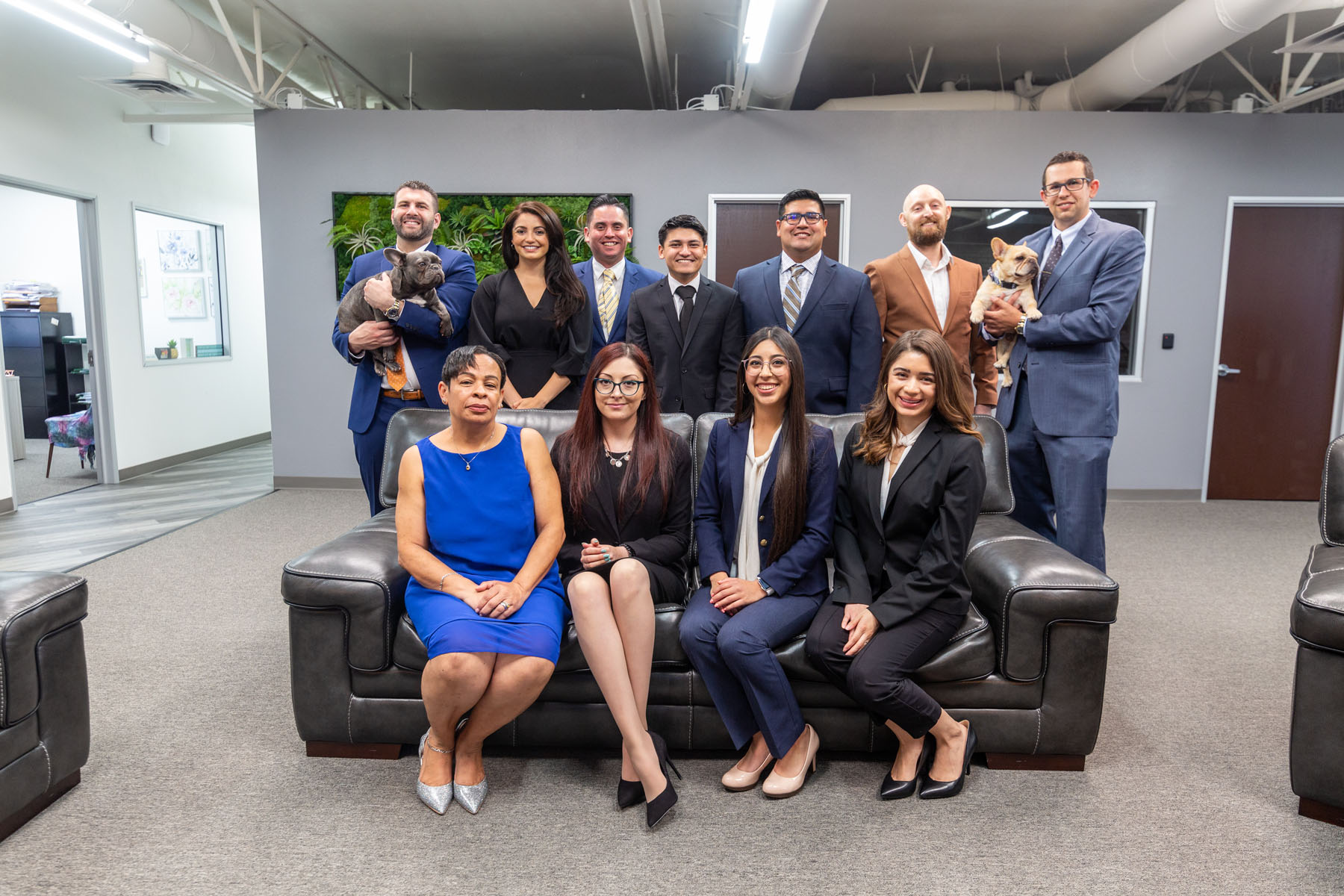When you’re driving on a public road, you have a duty to do so safely. Failing to drive safely could result in a sudden stop accident. Safe driving isn’t just a practice that keeps you safe, it protects other drivers and their passengers too. When you need to stop your car, you’ll ideally do so with plenty of warning. Slowing down safely prevents accidents from happening and it lessens damage to your brake pads. There are some occasions where you’ll need to stop sharply, though. When this results in an incident, you may be involved in a sudden stop accident.
Unlike other personal injury cases involving vehicles, sudden stop accidents are difficult to prove. Comparative negligence is a common feature, especially if there are mitigating circumstances. By understanding more about sudden stop accidents, you can decide what to do if you’re involved in one.
What is a sudden stop accident?
Sudden stop accidents occur when you brake sharply to stop your car and there’s a crash as a result. You can become involved in such accidents when you’re driving behind someone and they stop suddenly and you crash into them. Or, you may be the person who needs to stop suddenly and you find that a careless driver rear-ends you. Depending at the speed you’re traveling, you may incur injuries ranging from minor whiplash through to those that are more severe.
In a lot of cases, sudden stop accidents only involve two vehicles. However, there are some circumstances where they involve more than two. You don’t need to be one of the vehicle drivers to suffer as a result. Passengers are vulnerable to soft tissue injuries too.

Why do sudden stop accidents happen?
There will come a time in every driver’s life when they have to stop suddenly. For example, if a child runs out onto the road in front of your vehicle, you’ll need to brake sharply to avoid crashing into them. If you’re driving behind a vehicle that stops suddenly, there’s a risk you’ll crash into that person.
Hazards on the Road
Hazards can appear on the road for any number of reasons. When someone is driving, it’s their duty to watch out for them. Sometimes, those hazards may take you by surprise. For example, if you’re driving down a busy highway behind a pickup truck and something falls off it, you may need to stop suddenly to avoid a serious accident. Similarly, if there’s an obstruction in the road during bad weather and it becomes visible at the last minute, you’ll need to stop suddenly to avoid crashing into it.
Sometimes hazards appear when the driver hasn’t been taking reasonable precautions to anticipate them. If you regularly drive near a school at the time that the academic day is finishing, you need to look out for children who suddenly run onto the road. Driving at speed in such areas is unwise because the higher your speed, the harder it is to stop quickly.
Distracted Drivers
There are plenty of ways drivers can become distracted, resulting in a sudden stop accident. Texting while driving, using your hands-free devices to talk, adjusting your GPS, and tweaking your radio are all distractions. If they momentarily result in you no longer paying attention to what’s happening on the road, you may fail to stop for a traffic light. Or, you could find yourself getting too close to the car in front.
Distractions don’t always come in the form of phones. Passengers can distract you too. Drivers may also become distracted if they’re under the influence of drugs, alcohol, or medications. When that’s the case, they’re usually at fault.
Driving Too Close to Other Vehicles
How close you drive to the vehicles in front of you should depend on your speed and the weather conditions. The faster your speed, the longer it takes for you to stop. Therefore, you need to maintain sufficient space between your vehicle and the car in front. If it’s raining, you need even more distance. Water on the road reduces friction between your tires and the road surface. If the road is icy, you should increase your stopping distance even more.
If someone stops suddenly and the driver behind them has been driving too close, it may be the rear driver’s fault. Driving too close is a common defense used by drivers who needed to stop suddenly.
Broken Brake Lights
It’s important to ensure your brake lights are working properly. If they aren’t and you stop faster than usual, the driver behind you may not have enough warning to come to a stop too. As a result, they’ll brake too late and they could plow into the back of your vehicle. If a driver fails to drive with their lights on, they’re not giving other drivers the chance to stop when they brake suddenly.
Poor Vehicle Maintenance
Generally, poor vehicle maintenance can reduce your stopping times. If your brake pads are worn, your tires don’t have enough tread or your car’s alignment is off, you may find it difficult to stop in a timely manner. As a driver, it’s your responsibility to maintain your vehicle so it’s roadworthy. If you’re in an accident and you can prove that the other driver didn’t maintain their vehicle, you may have a claim.
Steps You Need to Take Following a Sudden Stop Accident
The first few moments following a sudden stop accident are often tense. It isn’t unusual for both drivers to feel as though the other person was at fault. It’s important that you don’t engage in any arguments in the aftermath and never admit fault at the scene. You’ll need an objective assessment of the circumstances before anybody can establish liability.
Make sure you stop your car in a safe place and exit the vehicle onto the safest side. You’ll need to exchange insurance details with the other driver. Make a note of their license plate, especially if they’re refusing to provide you with their details. Some drivers may do this because they don’t feel as though they’re at fault. Others choose to do so because they’re driving without insurance. Driving without insurance can result in significant fines in the State of California.
If it’s safe to do so, briefly assess the damage to your vehicle and the other driver’s vehicle at the scene. Try to take photos of both vehicles using your smartphone, if you’re carrying one. Most smartphones automatically add the time and date to photos, so images you capture can be used as evidence.
If you believe you’re injured or if someone else is injured, try to determine the safest way to access medical attention. It’s sometimes necessary to call for an ambulance. Even if you don’t feel as though you need medical attention immediately, it’s best to speak with a medical professional. You’ll produce a lot of adrenaline in the aftermath of an accident, which can sometimes mask injury symptoms. By seeing a doctor sooner rather than later, you’ll benefit from a thorough assessment of the accident’s consequences.

Injuries Following a Sudden Stop Accident
It’s more common to experience a soft tissue injury following a sudden stop accident than it is to encounter broken bones. You may hear other people refer to such injuries as whiplash.
Whiplash involves damage to your muscles, tendons, and ligaments. Depending on its severity, it can result in significantly reduced mobility. It’s worth remembering that the signs of whiplash aren’t always immediate. As your body moves through its inflammatory processes, your pain and swelling will increase.
It’s normal for sudden stop accident victims to experience whiplash days or weeks after the event. If this is something that’s happened to you, see a medical professional for an assessment. Although soft tissue injuries don’t often appear on diagnostic images, such as x-rays, your doctor can assess them in other ways. Medical professionals are trained in recognizing a reduced range of motion. Getting a report from a doctor or physiotherapist can help your case if you want to claim for damages.
Spinal Damage
Sudden stop accidents do involve sharp and unexpected movements. Depending on your current state of health, you may experience spinal damage. Fortunately, that damage isn’t as severe as it is in high-speed collisions. However, some of the symptoms that accompany a slipped disc can be quite distressing.
Depending on the location of your slipped disc, you may experience pain, a reduced range of motion, or loss of some bodily functions. In a lot of cases, the damage is temporary. However, you may experience a loss of earnings if you’re unable to work as a result.
Mental Distress
It’s important not to disregard the impact of mental distress following any accident. Although the initial period following the incident will set your heart racing, you may find yourself battling anxiety afterward. Your stress levels could also start to rise if you’ve incurred significant damage to your vehicle and you’re no longer able to drive it as a result.
Gathering Medical Evidence
If you decide to pursue a personal injury case against the other driver, make sure you gather all your medical evidence. Every note, diagnostic image, prescription, and treatment plan counts. If you need ongoing therapies, such as physiotherapy, your lawyer will need access to that information too. Additionally, if you believe you’re suffering from mental distress, discussing your worries with a counselor can help your case.
Assessing Damage to Your Vehicle
Don’t be fooled by a lack of vehicle damage at the scene. Crashes of all types are usually high velocity. This means the damage you see on the surface is unlikely to reflect the damage beneath.
After you’ve received medical treatment, speak to a mechanic about performing a full assessment of your car. They’ll look for any hidden damage you’ve incurred and they’ll make recommendations for tackling it. If you regularly use your car for work and you’re unable to drive it, you may need to lease a car. Providing the cost of leasing a vehicle is reasonable, you might find that you can pursue the other driver for the costs you’ve incurred.
Previous Mechanic Reports
If you’re a good driver and a careful road user, your vehicle may have received the attention of a mechanic before. For example, when you take your car in for a routine service, your mechanic will detail what the servicing involved. Providing a previous mechanic’s report makes it easier for insurance companies and legal professionals to conclude when any damage occurred. Additionally, it demonstrates that your car was in a safe state for driving.
Personal Injury Sudden Stop Accident Cases
Making a claim for personal injury in sudden stop accident cases isn’t always easy. It’s difficult to identify who was truly at fault. If you’re the driver at the rear and you’ve crashed because someone stopped in front of you, they may claim you were driving too close. In the absence of video evidence, it’s difficult to argue against this.
Similarly, if you’re the driver in front and you felt it was the rear driver’s fault, you’ll need to prove that your stop was reasonable. For example, if you had to stop suddenly because an animal came onto the road, that will be reasonable depending on the type of animal. If it was a horse, it’s sensible to stop suddenly. If it was a rabbit, your stop may not be so justified.
In any sudden stop accident, both parties’ insurance companies and legal teams will look for contributing factors. If you were talking on the phone at the time, even using hands-free, you probably weren’t giving the road your full attention.
Seeking Legal Representation
If you’ve suffered as a result of a sudden stop accident, seek legal representation. There’s a chance you can claim for any expenses, injuries, and distress you’ve suffered. Gathering the right evidence may be difficult, but the right legal team can fight the case on your behalf.
At Batta Fulkerson, we assist clients with sudden stop accident claims throughout San Diego. Using our expertise in personal injury cases and our access to experts, we can help you gain the compensation you deserve. If you’re ready to start your case, contact us for an appointment.




